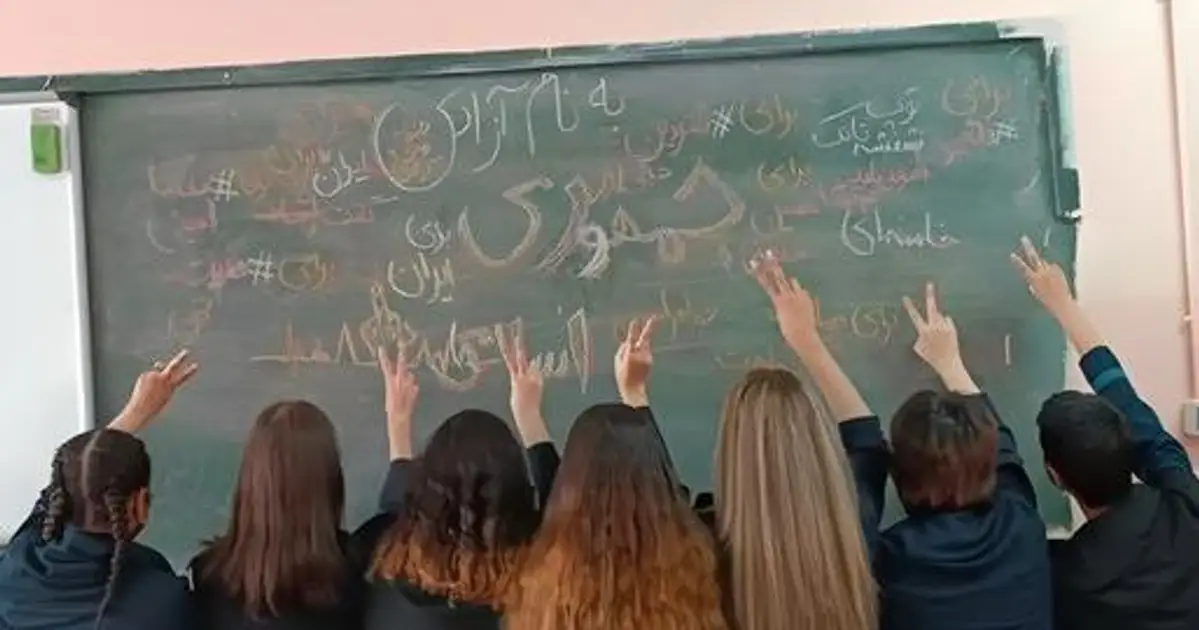On Teacher’s Day, the Supreme Leader of the Islamic Republic often boasts that teachers “are the architects of Iran’s future.”
In Ali Khamenei’s myopic worldview, this future likely entails today’s young Iranians carrying on the torch of the 1979 Islamic Revolution, along with its tenets of political Islam.
But, the ruler’s decades-long endeavor to indoctrinate and shape post-revolution generations of Iranians through the education system and dozens of state and religious propaganda outfits has failed, tarnishing the legacy of the Islamic Republic.
From widespread secularization to the populace’s resolute anti-regime stance and protests, Iran has witnessed profound transitions over the past decade. In the process, it’s evident that the people have turned their backs to the aspirations of both Supreme Leader.
Today’s youth, thoroughly detached from the state, often lead dual lives: experiencing pervasive oppression at schools and universities while encountering contrasting narratives of pre-revolutionary life at home. Despite crackdowns on internet access amid protests, Generation Z has found a window into life in the West, solidifying their rejection of their daily reality.
But, Khamenei can’t take all the credit for this rejection – after all, he is only the second Supreme Leader. His predecessor, Ruhollah Khomeini, did his share to try and forcibly imprint his worldview onto Iranian youth through school curriculums.
Iran’s Supreme Leader Ali Khamenei waves during a meeting with teachers in Tehran, Iran May 1, 2024.
Khamenei, though, is unlikely to cease his efforts. Recently, the regime’s education officials have hinted at several overhauls, indicating a further tightening of control over what is taught to children and students.
Here is a brief overview of what you need to know about the Islamic Republic’s quest to mold the future Iranian generations through schools and universities – and how they failed in their goal to establish Iran as a successful example of political Islam.
Islamic ‘Revolutionary’ Overhaul of Iran’s Education System
Let’s take a step back.
For a period after the revolution in 1979, after the ouster of Iran’s monarch Shah Mohammad Reza Pahlavi, Iranian universities were shut down to completely alter the country’s education system according to the new government’s ideological framework.
“Iran’s new revolutionary authorities are engaged in a massive upheaval of the country’s educational system from the primary grades through the universities,” reads a Washington Post article from 1980.
Literature textbooks would start with songs and slogans of the Islamic revolution – and instead of reading the great Persian poets, young children would learn chants like “Khomeini, Khomeini, you are light from God” and “This American shah should be executed.”
In directives that could be called revisionism, history textbooks were rewritten to promote Islamic principles and so-called revolutionary values, with hardly any mention of the ancient kings of Persia.
The Islamic Republic’s first Supreme Leader Rouhollah Khomeini early on saw the potential in using the education system to pass on the ideals articulated with the birth of Islam 14 centuries ago.
Conversely, Shah Mohammad Reza Pahlavi’s “White Revolution” in the 60s and 70s had aimed to modernize Iran through means that included educational advances – including the deployment of teachers to villages that had no schools. The educational system was secular and mostly based on the European models, although students had a weekly hour about the White Revolution and modernization.
Iran’s Al-Mustafa International University plays a key role in this strategy, receiving substantial funding to educate foreign students and spread the regime’s Shiism worldwide. The institution has students from China, African countries and Latin America. The university has faced international sanctions for allegedly recruiting combatants for conflicts like the war in Syria.
Tehran’s Sharif University for instance, is also under international financial sanctions and known for its close ties to the military and being engaged in military and ballistic missile-related projects for the Iranian government.
Iran’s Teachers Confront Hostility and a Failing Educational System
While the Supreme Leader has verbally revered the role of teacher’s in the country, teachers themselves have been met with hostility by the regime.
Their jobs have been hampered by severely low salaries, poor working and living conditions – and in return, placated with unfulfilled promises.
Recently, teacher’s have warned that the regime’s brand of ideological curriculum means a “dead end” for children – and that the authorities have failed in the education sector.
Teachers report that students are rejecting the mandated school curriculum, which is heavily dominated by ideological and religious content, even within science subjects. They say this has led to a significant loss of interest among students.
The regime’s security forces have also often attacked gatherings of parents voicing their concerns about the significant qualitative shortcomings of the country’s educational system, including a shortage of staff.
Among its shortcoming, an expert report published last year by the ‘reformist’ news outlet Etemaad, showed several significant qualitative deficiencies in Iran’s education system – including a lack of justice in providing educational opportunities and a legitimacy gap, stemming from disparities between students’ expectations and authorities’ ideological perspectives.

